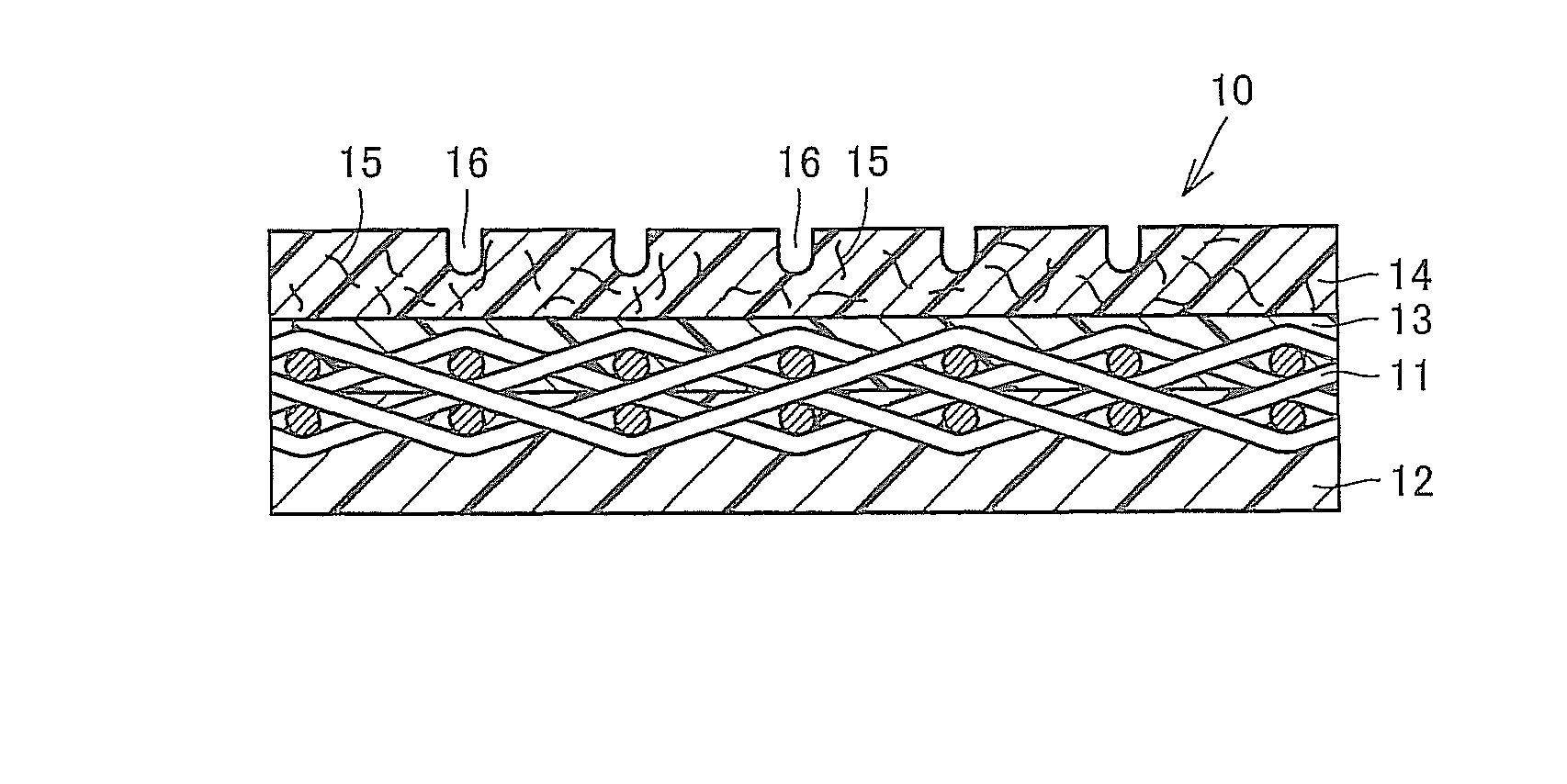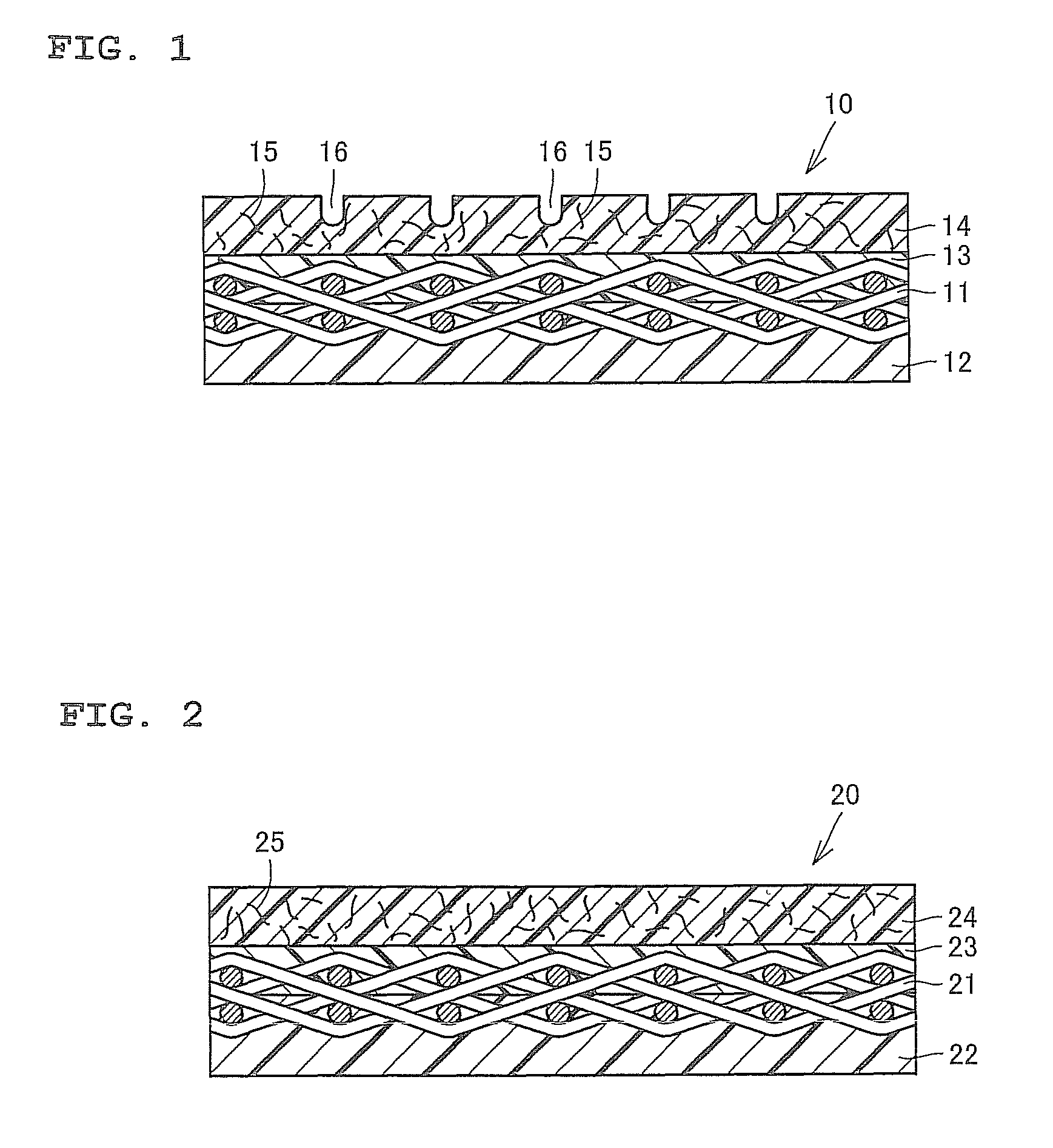Papermaking belt
a technology of papermaking belts and belt loops, applied in the field of papermaking belts, to achieve the effect of superior strength
- Summary
- Abstract
- Description
- Claims
- Application Information
AI Technical Summary
Benefits of technology
Problems solved by technology
Method used
Image
Examples
Embodiment Construction
[0026]FIG. 1 is a cross-sectional view of a papermaking belt according to an embodiment of the present invention. A papermaking belt 10 of the present embodiment is a shoe press belt for use in a pressing / dehydrating process of a wet paper web. The papermaking belt 10 includes: a base material layer 11; a back-surface-side resin layer 12 which is provided on the back surface side of the base material layer, and at least a part of which has impregnated into the base material layer from the back surface side of the base material layer 11; a first resin layer 13 which has a relatively low viscosity, and has impregnated into the base material layer 11 from the front surface side of the base material layer; and a second resin layer 14 provided on the front surface side of the first resin layer 13.
[0027]The base material layer 11 includes longitudinal and lateral yarns. Since the papermaking belt 10 contains the base material layer 11 inside, the strength in a machine direction (MD direct...
PUM
| Property | Measurement | Unit |
|---|---|---|
| length | aaaaa | aaaaa |
| length | aaaaa | aaaaa |
| length | aaaaa | aaaaa |
Abstract
Description
Claims
Application Information
 Login to View More
Login to View More - R&D
- Intellectual Property
- Life Sciences
- Materials
- Tech Scout
- Unparalleled Data Quality
- Higher Quality Content
- 60% Fewer Hallucinations
Browse by: Latest US Patents, China's latest patents, Technical Efficacy Thesaurus, Application Domain, Technology Topic, Popular Technical Reports.
© 2025 PatSnap. All rights reserved.Legal|Privacy policy|Modern Slavery Act Transparency Statement|Sitemap|About US| Contact US: help@patsnap.com


